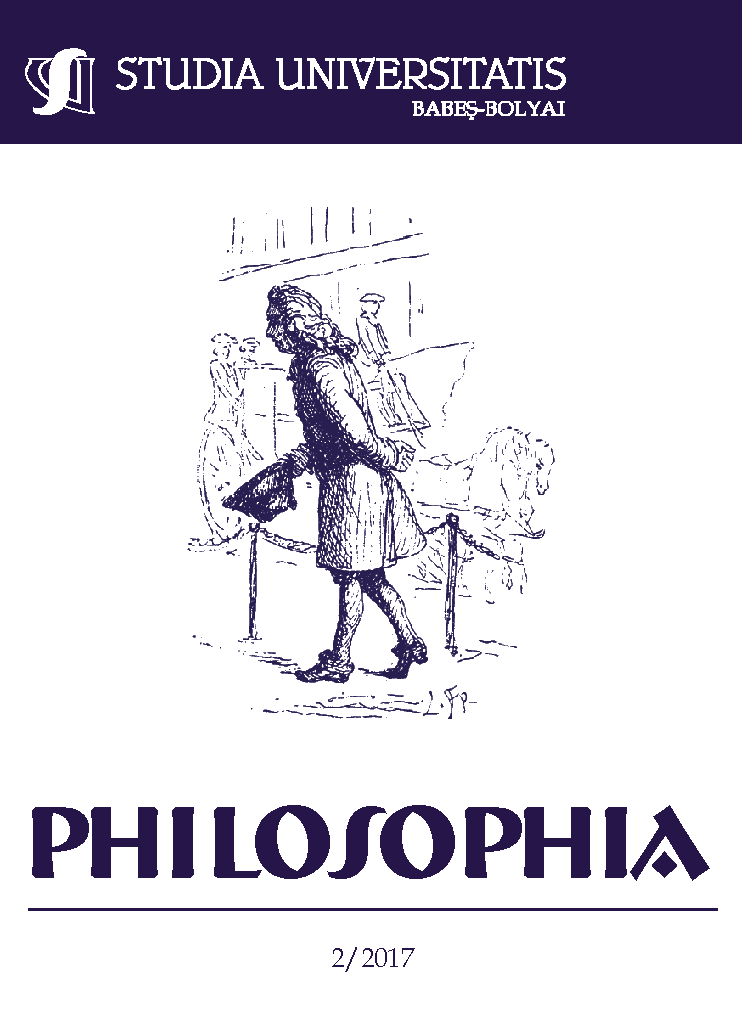SAINT AUGUSTINE’S AND DANTE’S MODELS OF HISTORY
DOI:
https://doi.org/10.24193/subbphil.2017.2.06Keywords:
St. Augustine, Dante Alighieri, models of history, eschatology, apocalypticism, De monarchiaAbstract
In this paper, I will try to analyze St. Augustine’s and Dante’s views towards history by showing how their visions can be articulated into particular models of history, i.e. a particular schema that describes the unfolding of history with its specific focal points, and to what extent this model differs from one author to another. If in Augustine’s case, by exploring his division of sacred history in component parts, that can be found throughout his work, I will argue for a Christocentric model, in Dante’s case, by analyzing his work on political philosophy, De monarchia, I will argue for a teleological model of history.
References
Alighieri, Dante, “Monarchia” in Anthony K. Cassell(ed.), The Monarchia Controversy, The catholic University of America Press, 2004;
Augustine, “De diversis quaestionibus octoginta tribus” in Jacques-Paul Migne(ed.), Patrologia latina, Vol. 40;
Augustine, “Expositio quarumdam propositionum ex epistola ad romanos” in Jacques-Paul Migne (ed.), Patrologia latina, Vol. 35;
Augustine, “Of True Religion” in Burleigh, J.H. S. (ed.), Augustine, Earlier writings, Westminster John Knox Press, 2006;
Augustine, “On the Catechising of the Uninstructed”, translated by S.D.F. Salmond. From Nicene and Post-Nicene Fathers, First Series, Vol. 3. Edited by Philip Schaff (Buffalo, NY: Christian Literature Publishing Co., 1887.) Revised and edited for New Advent by Kevin Knight. http://www.newadvent.org/fathers/1303.htm;
Augustine, “The city of God”, translated by Marcus Dods. From Nicene and Post-Nicene Fathers, First Series, Vol. 2. Edited by Philip Schaff. (Buffalo, NY: Christian Literature Publishing Co., 1887.). Revised and edited for New Advent by Kevin Knight. http://www.newadvent.org/fathers/1201.htm.
Bittner, Rudiger, "Augustine’s Philosophy of History", in Matthews, The Augustinian Tradition, University of California Press, 1999;
Burr, David, The Spiritual Franciscans. From protest to persecution in the century after Saint Francis, The Pennsylvania State University, 2001;
Casciani, Santa, Dante and the Franciscans, Brill, 2006;
Charles T. Davis, “Dante's Vision of History”, in Dante Studies, with the Annual Report of the Dante Society, No. 93 (1975), pp. 143-160;
Donna Mancusi-Ungaro, Dante and the empire, Peter Lang Publishing, 1987;
Emmerson, K. Richard, The apocalypse in Middle Ages, Cornell University Press, 1993;
Hammond, Hellmann, Goff(ed.), A companion to Bonaventure, Brill, 2014;
Hellemo, Geir, Adventus domini: Eschatological Thought in 4th-century apses and catecheses, Brill, 1989;
Mandelbaum, Allen, The Divine Comedy of Dante Alighieri: Inferno, University of California Press, 1980;
Mandelbaum, Allen, The Divine Comedy of Dante Alighieri: Paradiso, University of California Press, 1984;
Mandelbaum, Allen, The Divine Comedy of Dante Alighieri: Purgatorio, University of California Press, 1982.
Markus, R. A., Saeculum: History and Society in the theology of St. Augustine, Cambridge University Press, 2007;
Ruud, Jay, Critical companion to Dante. Literary Reference to His Life and Work, Fact on file, 2008;
Van Oort, J., 2012, ‘The end is now: Augustine on History and Eschatology’ in Theological Studies, 68(1), Art. #1188, 7 pages;
Vessey, Mark (ed.), A companion to Augustine, Blackwell, 2012.
Downloads
Published
How to Cite
Issue
Section
License
Copyright (c) 2017 Studia Universitatis Babeș-Bolyai Philosophia

This work is licensed under a Creative Commons Attribution-NonCommercial-NoDerivatives 4.0 International License.





